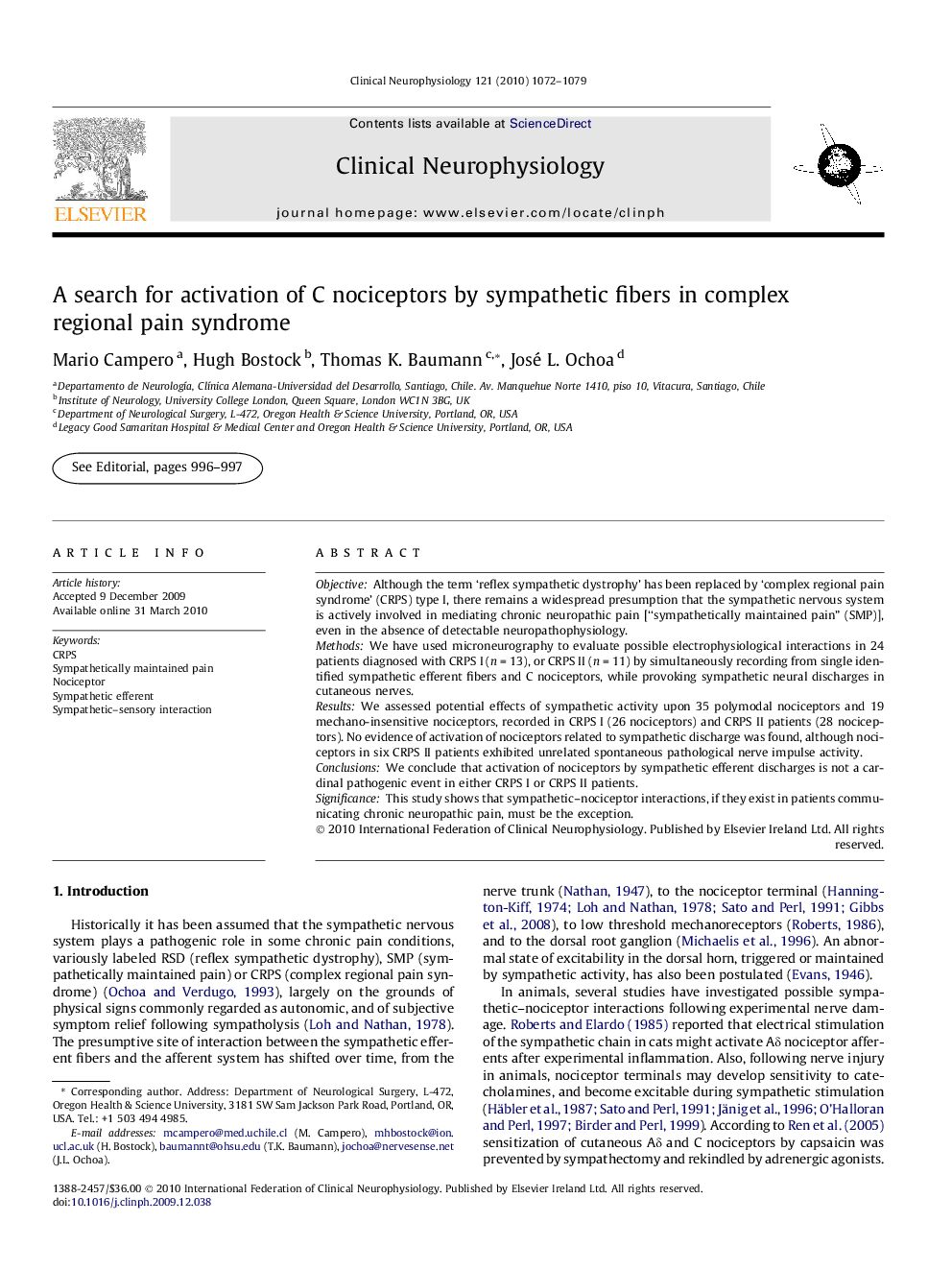| Article ID | Journal | Published Year | Pages | File Type |
|---|---|---|---|---|
| 3045931 | Clinical Neurophysiology | 2010 | 8 Pages |
ObjectiveAlthough the term ‘reflex sympathetic dystrophy’ has been replaced by ‘complex regional pain syndrome’ (CRPS) type I, there remains a widespread presumption that the sympathetic nervous system is actively involved in mediating chronic neuropathic pain [“sympathetically maintained pain” (SMP)], even in the absence of detectable neuropathophysiology.MethodsWe have used microneurography to evaluate possible electrophysiological interactions in 24 patients diagnosed with CRPS I (n = 13), or CRPS II (n = 11) by simultaneously recording from single identified sympathetic efferent fibers and C nociceptors, while provoking sympathetic neural discharges in cutaneous nerves.ResultsWe assessed potential effects of sympathetic activity upon 35 polymodal nociceptors and 19 mechano-insensitive nociceptors, recorded in CRPS I (26 nociceptors) and CRPS II patients (28 nociceptors). No evidence of activation of nociceptors related to sympathetic discharge was found, although nociceptors in six CRPS II patients exhibited unrelated spontaneous pathological nerve impulse activity.ConclusionsWe conclude that activation of nociceptors by sympathetic efferent discharges is not a cardinal pathogenic event in either CRPS I or CRPS II patients.SignificanceThis study shows that sympathetic–nociceptor interactions, if they exist in patients communicating chronic neuropathic pain, must be the exception.
